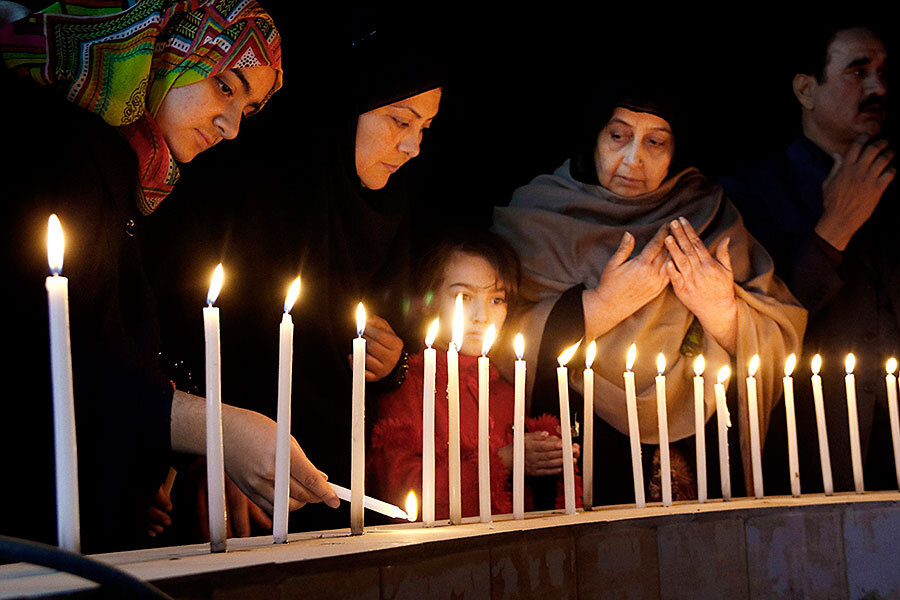Why Taliban assault on Pakistani university embodies the country's struggle
Loading...
An attack on a university in northwest Pakistan claimed by one faction of the Pakistani Taliban, calls into question the efficacy of the Pakistan government’s security measures, triggered by a similar school massacre of 2014.
The attack Wednesday morning targeted Bacha Khan University in the town of Charsadda, just 25 miles from the school where the Pakistani Taliban killed 145 people, mostly children, in 2014.
On Wednesday, militants killed at least 19 and wounded dozens more. At least four militants wielding AK-47s invaded the grounds of the university around 9 a.m. under the cover of a wintry fog.
They scaled the compound’s back walls and cut through barbed wire, before homing in on a male students’ dormitory.
Witnesses reported hearing explosions, and while there is no suggestion any of the assailants blew themselves up, there were conflicting reports as to whether they were wearing suicide vests.
Police and soldiers rushed to the scene and engaged the militants in a gunfight. The Pakistani army confirmed that all attackers had been killed about six hours after the incident began.
While there was security at the university, it seems as though the guards were simply not equipped to deal with such a ferocious assault.
“The university has its own security staff, but it’s not adequate enough to face the well-armed and -trained Taliban,” a university official said, according to the New York Times.
A Taliban leader, Khalifa Umar Mansoor, who heads a splinter group of the Pakistani militants, claimed responsibility for the attack in a phone-call to the Associated Press.
Mr. Mansoor, also the mastermind behind the 2014 slaughter, said it was retaliation for the government’s December execution of four men accused of assisting in that raid, telling Reuters that the university was targeted as a government institution that supported the army.
Yet a spokesman for the main Pakistani Taliban faction later disowned the attackers, calling their act “un-Islamic”, insisting those responsible would be tried before an Islamic court.
The spokesman, Mohammad Khurasani, dismissed as non-sensical the idea that the Taliban would have done this, describing students in non-military institutions, such as the one targeted, as “the future of our jihad movement”.
This attack is the second in as many days, a suicide bomber having struck a police checkpoint Tuesday, killing 11, in an assault claimed by the Taliban.
But this recent violence comes after more than a year of concerted effort by the Pakistani military to quell the restive northwest of the country, which is seen by many as having crumbled into a lawless land after decades of neglect and government complicity.
Prior to the December 2014 attack, many observers said that it was unlikely that the Pakistan army would ever take on the nest of militancy in those far reaches of Pakistan.
Authorities had reached an uneasy bargain with jihadists, using militant Islam to meddle in Afghanistan, stoke trouble in India, and influence domestic politics.
But the violence meted out to so many school children in 2014 changed everything.
According to The Economist, the army chief Gen. Raheel Sharif had been “itching to wage a full-blown campaign against domestic militants” for some time. But until this turning point had been reached, the public had simply been too indoctrinated by government sponsored pro-jihadi propaganda to support any such move.
Yet this latest wave of attacks will cast a shadow on the army’s campaign, causing many to wonder what more needs to be done to reign in the violence.
The Pakistani prime minister issued a statement of unwavering condemnation: “We are determined and resolved in our commitment to wipe out the menace of terrorism from our homeland,” he said in a press release. “The countless sacrifices made by our countrymen will not go in vain Inshallah.”
And then there is the resilience of ordinary people, determined to remain uncowed.
“Our resolve of educating our children cannot be shaken by such cowardly acts,” said Salma Khan, an official of Bacha Khan University.







